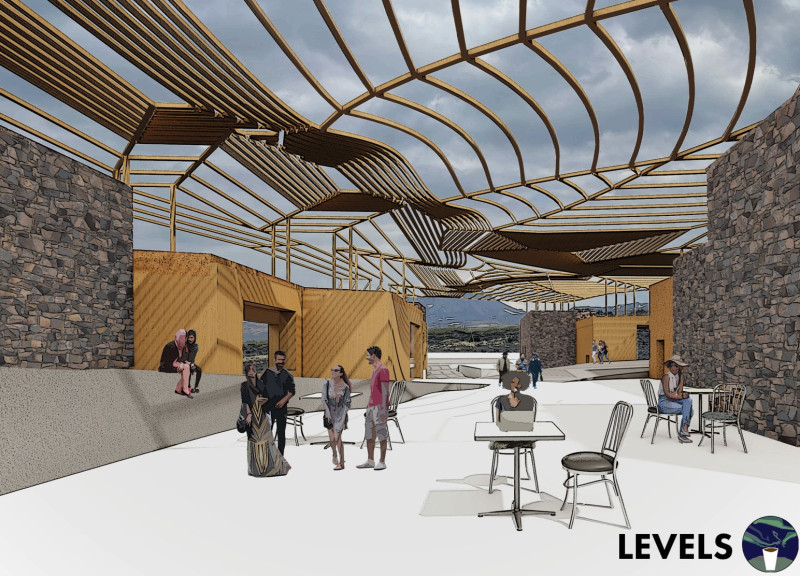5 key facts about this project
The architectural project is a contemporary visitor center designed to engage guests with the surrounding volcanic landscape. This facility not only serves as an operational hub for tourism but also offers educational resources about the geological features inherent to the area. Blending functional requirements with environmental considerations, the project employs a thoughtful design approach that emphasizes local materials and sustainable practices.
Connection to the Landscape
The visitor center's architecture is closely aligned with its geographical context, characterized by a cascading structure that follows the natural contours of the site. This approach helps to minimize disruption to the landscape while creating diverse spatial experiences across multiple levels. The building's form is accentuated by large openings that frame scenic views, allowing visitors to feel immersed in the surrounding environment.
Sustainability is a core component of the design philosophy. The use of locally sourced materials, such as lava rock for cladding and Icelandic wool for insulation, reinforces ecological responsibility and enhances the building's thermal performance. Additionally, the incorporation of geothermal energy systems reflects a commitment to reducing the overall energy footprint, aligning with modern sustainable architectural practices.
Unique Structural Elements
The architecture features a distinctive roof design characterized by a flowing wood lattice structure. This element not only provides shade and visual interest but also serves as a critical component in managing ventilation and light within the building. By allowing light to filter through the lattice, the design creates a dynamic interior atmosphere that changes throughout the day, enhancing the visitor experience.
Spatially, the layout is divided into three key levels that serve various functions. The ground level accommodates essential facilities such as a café and restrooms, focusing on accessibility and visitor services. The intermediate level hosts educational displays and viewing areas, promoting engagement with the geological context. Finally, the upper level offers observation points that provide expansive views, encouraging visitors to appreciate the striking landscape from unique vantage points.
Material Composition and Aesthetic Integration
The selection of materials plays a crucial role in the overall aesthetic and functionality of the building. The exterior cladding features traditional lava rock, which ties the structure to its geological environment, while the wood elements introduce warmth and comfort. The use of tempered glass enhances views and natural lighting, reinforcing the connection between the interior and exterior spaces.
Additionally, the design's careful planning reflects an understanding of visitor flow and experiences. Key transitions and circulation paths are positioned to facilitate movement while ensuring that points of interest are easily accessible. This structured approach improves the operational efficiency of the visitor center while maintaining a welcoming atmosphere.
In summary, this architectural project stands out due to its integration of local materials, sustainable energy practices, and a strong connection to the surrounding landscape. The thoughtful layout and distinctive structural elements work together to create an engaging visitor experience. For those interested in gaining a deeper understanding of the architectural ideas and design elements, reviewing the architectural plans, sections, and designs will provide further insight into this compelling project.






















































